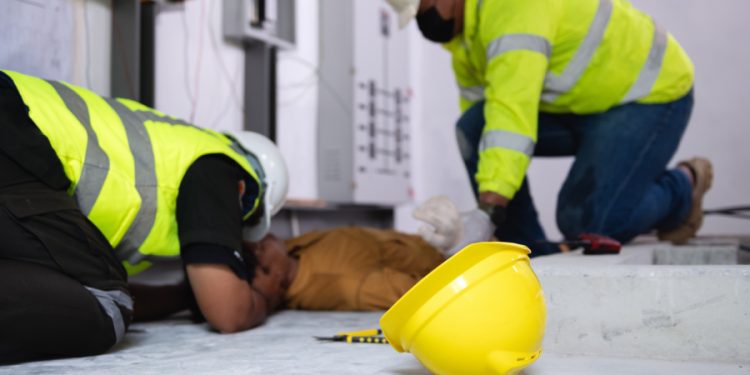Workplace Safety and Health (WSH) and workplace fatalities have been the buzzwords this year.
With the death of a Grab delivery rider on 1 September 2022, the number of workplace fatalities this year has gone up to 37 so far – the same as the whole of last year.
Why is this happening? NTUC Assistant Secretary-General Melvin Yong thinks it is because of COVID-19. He said in Parliament on 1 August that “COVID-19 seems to have undone all the hard work.”
Mr Yong added that the increase in workplace accidents was due to companies rushing to clear a backlog of work caused by the pandemic. He also called for a mandatory Safety Time Out (STO).
In response, Senior Minister of State (SMS) for Manpower Zaqy Mohamad said the ministry has ramped up measures since the trend of increased fatalities began in April. That month alone, there were 10 workplace deaths.
The measures include inspections, stiffer penalties and an STO – albeit usually voluntary.
A Strong WSH Culture
On 1 September, MOM figured enough was enough and instituted a mandatory STO for the first time.
It could be that all the words of caution by authorities have fallen on deaf ears.
Think tanks say any corporate culture starts from the very top, and that should include WSH too.
The Government is also coming after the top management of companies and holding them accountable.
MOM has introduced a six-month heightened safety period until February, during which any company found with serious WSH lapses may be debarred from hiring new foreign workers for up to three months.
Announced on 19 September, the Government from October will also gazette the Code of Practice (COP) on chief executives and board of directors’ WSH duties.
While the WSH Act already holds company directors liable for ensuring workers’ safety and health, the COP spells out bosses’ clear responsibilities for integrating WSH into organisational processes.
When there is an offence under the WSH Act, the courts can consider companies’ compliance with the COP in their judgment as mitigating factors.
Manpower Minister Tan See Leng said: “For a strong WSH culture to germinate, grow and flourish, it must start from the top – with the chief executive and company directors. This is because they are the ones with influence and control over budget, priority and training.
“Only the chief executive and board can do that; they will be able to ultimately drive good WSH practices on the ground.”
In response to the latest measure, Mr Melvin Yong said company leaders must build a strong safety culture.
He added that bosses “can influence decisions surrounding a company’s budget, timeline, priorities and WSH, to make WSH a top priority in their organisation.”
Migrant Workers’ Centre Executive Director Bernard Menon said he has always believed that management must lead the way to build a strong WSH culture at workplaces.
He said: “We feel more critically that it gives leaders a good blueprint to champion WSH culture and thereby protect and safeguard the health and safety of every worker.”
Dangling a Carrot
Enforcement and deterrence may not be enough to compel bosses to take ownership of WSH.
The Real Estate Developers’ Association of Singapore (REDAS) believes that incentives are also required to achieve zero workplace fatalities.
In line with this belief, the association encourages its members to pay out safety bonuses for good WSH performance.
Mr Zaqy Mohamad said developers have “tremendous influence” as service buyers to raise safety standards and reward contractors for exemplary safety performance.
“This would be a strong carrot in aligning contractors’ business interests with good WSH practices,” he added.
Two REDAS members, Keppel Land and City Developments Limited, are examples where developers have both introduced incentive schemes for good WSH performance for all their projects.
The Record to Achieve
2019 saw 39 workplace fatalities, the lowest since 2004 when records were first compiled.
We are just two deaths away from breaking that record, and we still have three months to go for 2022.
With construction projects on overdrive after the COVID-19 slump, meeting deadlines has become a priority.
Deadlines and needing to make up for lost time are usually the first step towards complacency. However, quality and safety are affected when you rush any work.
Perhaps developers should provide some breathing room on timelines for projects.
For example, pre-pandemic Built-to-Order projects by the Housing and Development Board used to be completed in about three years even though the construction timeline is about five years. The longer timeline accounts for disruptions, such as the pandemic that delayed many projects.
A delivery rider can also take their time to send the order to a customer if there is no time limit. The rider can use the additional time to focus on riding safely on the road.
Completing projects and orders faster than expected is commendable. But completing them fast should not come at the expense of workplace safety.
What will be even more commendable is achieving zero harm outlined in Vision Zero by the WSH Council.
Everyone wants zero harm to happen. Everyone agrees that it must happen. But to make zero harm possible, everyone must also agree to do their part – regardless if we are the CEO who holds the company together or the worker who welds the steel bars together.

